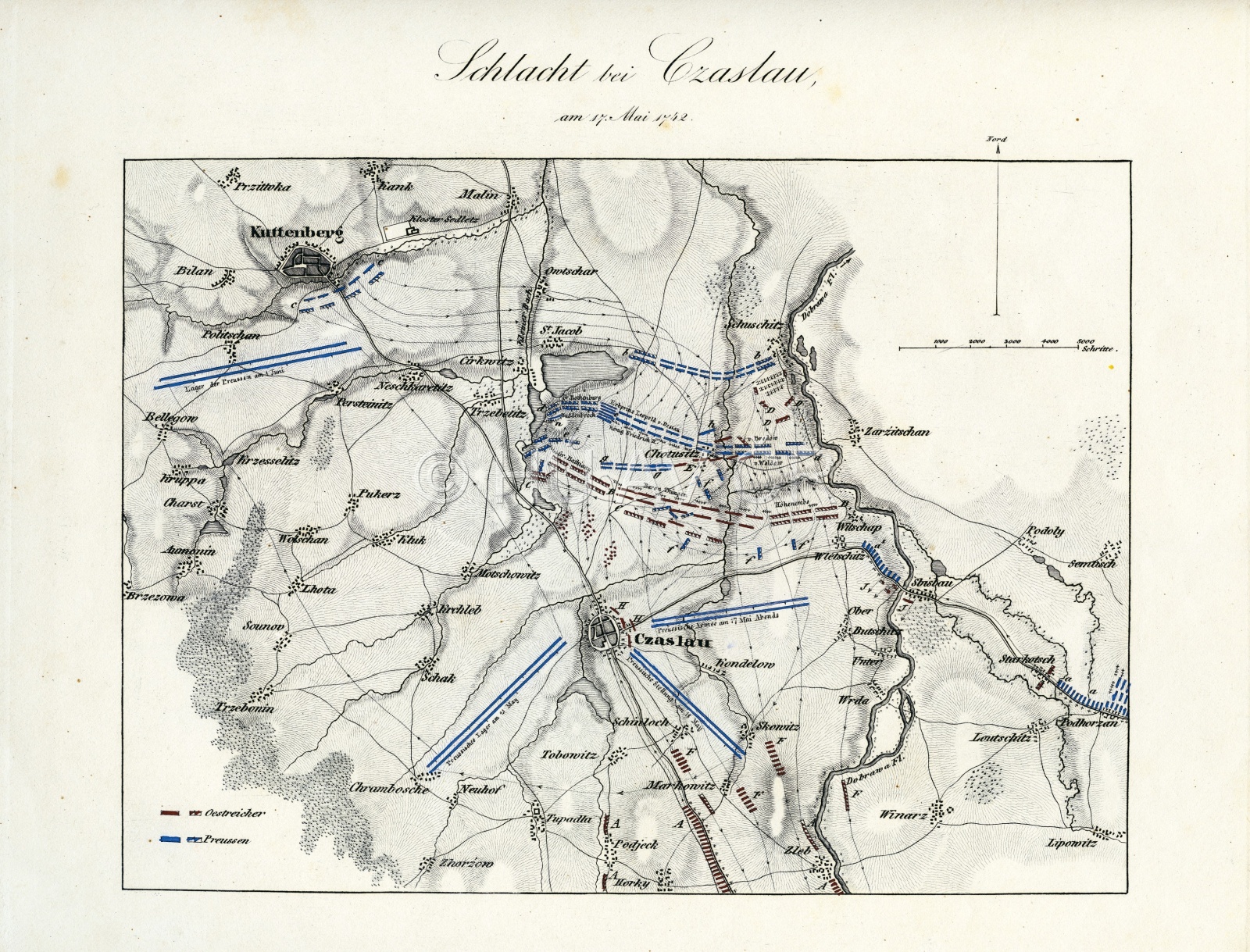POW camps and other locations where the Czechs and Slovaks were kept in Russia between 1914 and 1920
The first worldwide war, which broke out on 28 July 1914 when Austria-Hungary declared war on Serbia, started a reaction of joining actors that resulted in hundreds of thousands of prisoners of war after the first battles. Soldiers of the Austro-Hungarian Imperial and Royal Army – the Czechs and Slovaks – filled the prisoner of war (POW) camps mainly in Russia, Serbia, France, and Italy. By virtue of compatriots and political activities of Tomáš Garrigue Masaryk and Milan Rastislav Štefánik, the Czech and Slovak prisoners formed Czechoslovak voluntary foreign forces, which became involved in the war. Several types of POW camps (Kriegsgefangenenlager) were also established for the enemy Entente soldiers on the Czech and Slovak territories.
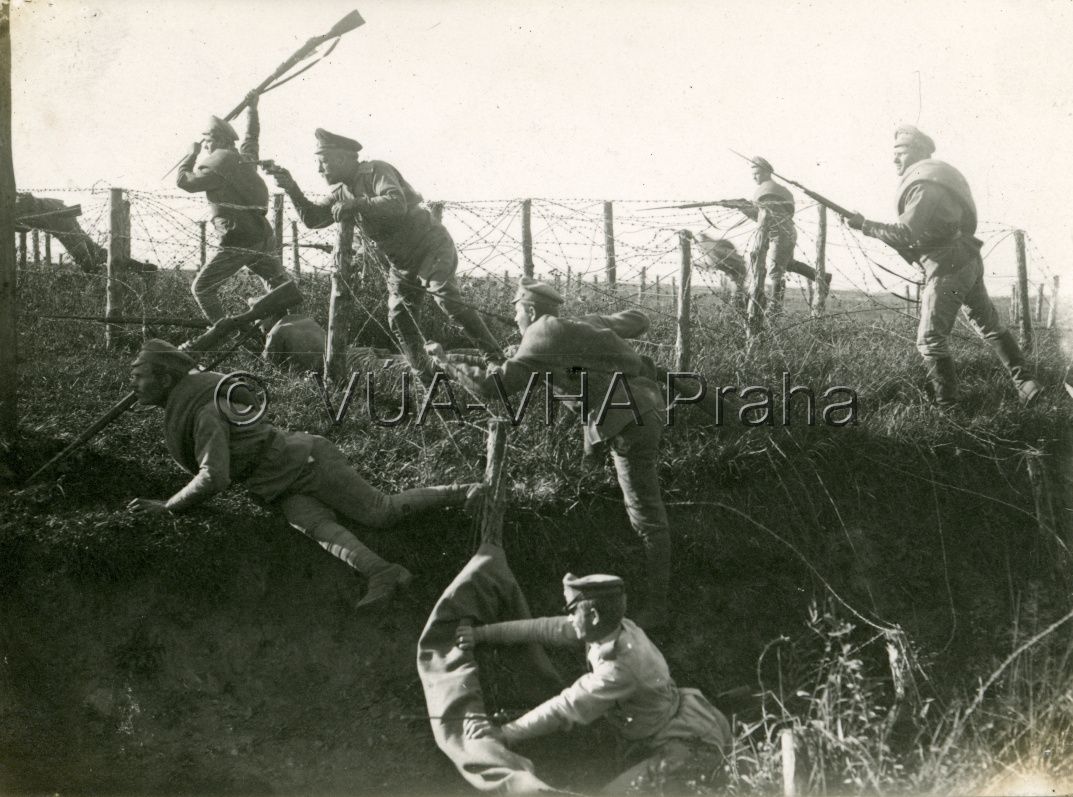
While the Russian troops were subject to gradual disintegration, the former prisoners of war in Ukraine trained hard in the Czechoslovak voluntary units. Soldiers in training attacks over obstacles in Polonne, September 1917. Military Historical Archive Prague
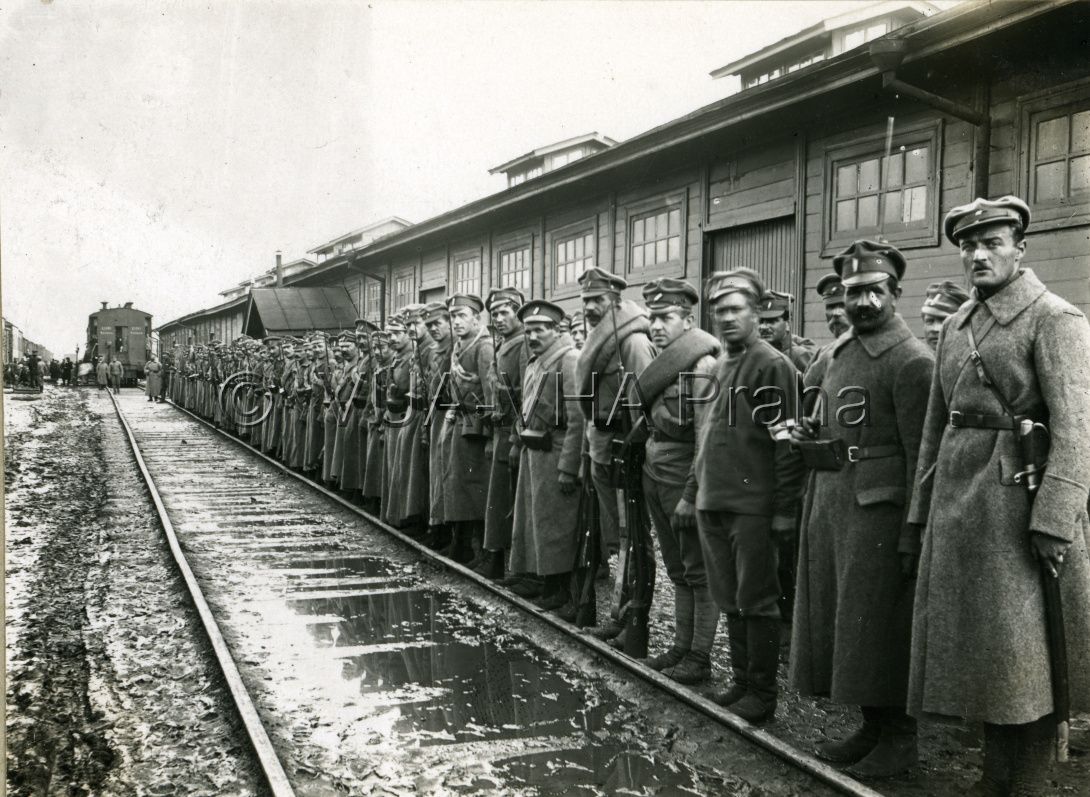
The third battalion of the 11th Czechoslovak Voluntary Revolutionary Army (Legions) was in charge of a sentry duty in Samara. In the photo, its 9th company is taking over the duty at Samara railway station in autumn 1918. Military Historical Archive Prague
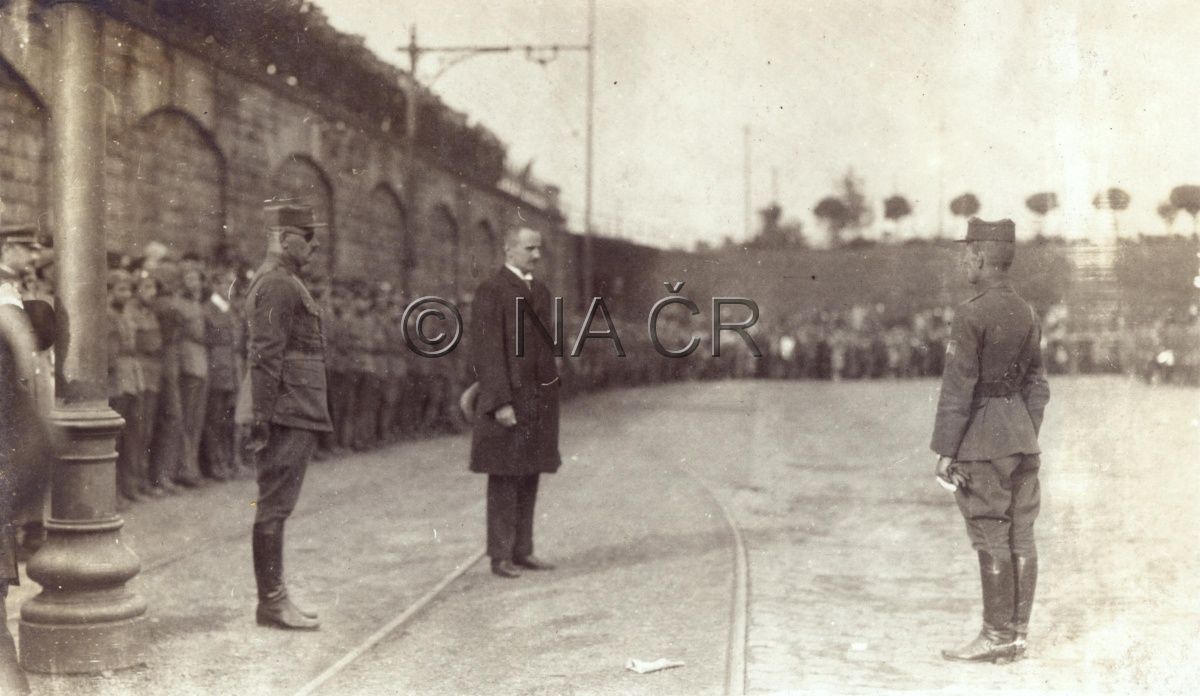
Return of part of the Czechoslovak Voluntary Revolutionary Army from Russia through a camp in Valcatier, Canada to their homeland in the summer of 1920. Their demobilisation also took place in Plzeň where the soldiers were expected by the National Defence Minister Ivan Markovič (in the middle, wearing plain clothes) who received a report from Col. Josef Váňa, commander of the 7th Czechoslovak Tatra Rifle Regiment in the presence of General Jan Syrový, commander of the Czechoslovak army in Siberia (first from the left). The National Archives, Prague
References
Prokš, P.: Habsburkové a Velká válka (1914–1918). Praha 2011;
Semotanová, E. ‒ Cajthaml, J. a kol.: Akademický atlas českých dějin. Praha 2014, 2. akt. vydání 2016;
Kárník, Z.: České země v éře první republiky. Vznik, budování a zlatá léta republiky (1918 - 1929) . Praha 2017.;
Bergman, P.: Lager Broumov/Braunau 1915–1918. Broumov 2018;
Zabloudilová, J.: V ruském zajetí. Organizace zajatých Čechů a Slováků v Rusku (1914–1918). Praha 2018;
Semotanová, E. Zudová-Lešková, Z. ‒ Močičková, J. Cajthaml, J. ‒ Seemann, P. ‒ Bláha J. D. a kol.: Český historický atlas. Kapitoly z dějin 20. století. Praha 2019.

This work is licensed under a Creative Commons BY-NC-ND 4.0
POW camps and other locations where the Czechs and Slovaks were kept in Russia between 1914 and 1920
The first worldwide war, which broke out on 28 July 1914 when Austria-Hungary declared war on Serbia, started a reaction of joining actors that resulted in hundreds of thousands of prisoners of war after the first battles. Soldiers of the Austro-Hungarian Imperial and Royal Army – the Czechs and Slovaks – filled the prisoner of war (POW) camps mainly in Russia, Serbia, France, and Italy. By virtue of compatriots and political activities of Tomáš Garrigue Masaryk and Milan Rastislav Štefánik, the Czech and Slovak prisoners formed Czechoslovak voluntary foreign forces, which became involved in the war. Several types of POW camps (Kriegsgefangenenlager) were also established for the enemy Entente soldiers on the Czech and Slovak territories.

While the Russian troops were subject to gradual disintegration, the former prisoners of war in Ukraine trained hard in the Czechoslovak voluntary units. Soldiers in training attacks over obstacles in Polonne, September 1917. Military Historical Archive Prague

The third battalion of the 11th Czechoslovak Voluntary Revolutionary Army (Legions) was in charge of a sentry duty in Samara. In the photo, its 9th company is taking over the duty at Samara railway station in autumn 1918. Military Historical Archive Prague

Return of part of the Czechoslovak Voluntary Revolutionary Army from Russia through a camp in Valcatier, Canada to their homeland in the summer of 1920. Their demobilisation also took place in Plzeň where the soldiers were expected by the National Defence Minister Ivan Markovič (in the middle, wearing plain clothes) who received a report from Col. Josef Váňa, commander of the 7th Czechoslovak Tatra Rifle Regiment in the presence of General Jan Syrový, commander of the Czechoslovak army in Siberia (first from the left). The National Archives, Prague
References
Prokš, P.: Habsburkové a Velká válka (1914–1918). Praha 2011;
Semotanová, E. ‒ Cajthaml, J. a kol.: Akademický atlas českých dějin. Praha 2014, 2. akt. vydání 2016;
Kárník, Z.: České země v éře první republiky. Vznik, budování a zlatá léta republiky (1918 - 1929) . Praha 2017.;
Bergman, P.: Lager Broumov/Braunau 1915–1918. Broumov 2018;
Zabloudilová, J.: V ruském zajetí. Organizace zajatých Čechů a Slováků v Rusku (1914–1918). Praha 2018;
Semotanová, E. Zudová-Lešková, Z. ‒ Močičková, J. Cajthaml, J. ‒ Seemann, P. ‒ Bláha J. D. a kol.: Český historický atlas. Kapitoly z dějin 20. století. Praha 2019.

This work is licensed under a Creative Commons BY-NC-ND 4.0
Czech and Slovak prisoners of war in Russia according to the 1916 census
The first worldwide war, which broke out on 28 July 1914 when Austria-Hungary declared war on Serbia, started a reaction of joining actors that resulted in hundreds of thousands of prisoners of war after the first battles. Soldiers of the Austro-Hungarian Imperial and Royal Army – the Czechs and Slovaks – filled the prisoner of war (POW) camps mainly in Russia, Serbia, France, and Italy. By virtue of compatriots and political activities of Tomáš Garrigue Masaryk and Milan Rastislav Štefánik, the Czech and Slovak prisoners formed Czechoslovak voluntary foreign forces, which became involved in the war. Several types of POW camps (Kriegsgefangenenlager) were also established for the enemy Entente soldiers on the Czech and Slovak territories.

While the Russian troops were subject to gradual disintegration, the former prisoners of war in Ukraine trained hard in the Czechoslovak voluntary units. Soldiers in training attacks over obstacles in Polonne, September 1917. Military Historical Archive Prague

The third battalion of the 11th Czechoslovak Voluntary Revolutionary Army (Legions) was in charge of a sentry duty in Samara. In the photo, its 9th company is taking over the duty at Samara railway station in autumn 1918. Military Historical Archive Prague

Return of part of the Czechoslovak Voluntary Revolutionary Army from Russia through a camp in Valcatier, Canada to their homeland in the summer of 1920. Their demobilisation also took place in Plzeň where the soldiers were expected by the National Defence Minister Ivan Markovič (in the middle, wearing plain clothes) who received a report from Col. Josef Váňa, commander of the 7th Czechoslovak Tatra Rifle Regiment in the presence of General Jan Syrový, commander of the Czechoslovak army in Siberia (first from the left). The National Archives, Prague
References
Prokš, P.: Habsburkové a Velká válka (1914–1918). Praha 2011;
Semotanová, E. ‒ Cajthaml, J. a kol.: Akademický atlas českých dějin. Praha 2014, 2. akt. vydání 2016;
Kárník, Z.: České země v éře první republiky. Vznik, budování a zlatá léta republiky (1918 - 1929) . Praha 2017.;
Bergman, P.: Lager Broumov/Braunau 1915–1918. Broumov 2018;
Zabloudilová, J.: V ruském zajetí. Organizace zajatých Čechů a Slováků v Rusku (1914–1918). Praha 2018;
Semotanová, E. Zudová-Lešková, Z. ‒ Močičková, J. Cajthaml, J. ‒ Seemann, P. ‒ Bláha J. D. a kol.: Český historický atlas. Kapitoly z dějin 20. století. Praha 2019.

This work is licensed under a Creative Commons BY-NC-ND 4.0
POW camps with a focus on the Czechs and Slovaks in Europe (overview)
The first worldwide war, which broke out on 28 July 1914 when Austria-Hungary declared war on Serbia, started a reaction of joining actors that resulted in hundreds of thousands of prisoners of war after the first battles. Soldiers of the Austro-Hungarian Imperial and Royal Army – the Czechs and Slovaks – filled the prisoner of war (POW) camps mainly in Russia, Serbia, France, and Italy. By virtue of compatriots and political activities of Tomáš Garrigue Masaryk and Milan Rastislav Štefánik, the Czech and Slovak prisoners formed Czechoslovak voluntary foreign forces, which became involved in the war. Several types of POW camps (Kriegsgefangenenlager) were also established for the enemy Entente soldiers on the Czech and Slovak territories.
References
Prokš, P.: Habsburkové a Velká válka (1914–1918). Praha 2011;
Semotanová, E. ‒ Cajthaml, J. a kol.: Akademický atlas českých dějin. Praha 2014, 2. akt. vydání 2016;
Kárník, Z.: České země v éře první republiky. Vznik, budování a zlatá léta republiky (1918 - 1929) . Praha 2017.;
Bergman, P.: Lager Broumov/Braunau 1915–1918. Broumov 2018;
Zabloudilová, J.: V ruském zajetí. Organizace zajatých Čechů a Slováků v Rusku (1914–1918). Praha 2018;
Semotanová, E. Zudová-Lešková, Z. ‒ Močičková, J. Cajthaml, J. ‒ Seemann, P. ‒ Bláha J. D. a kol.: Český historický atlas. Kapitoly z dějin 20. století. Praha 2019.

This work is licensed under a Creative Commons BY-NC-ND 4.0
POW camps with a focus on the Czechs and Slovaks in Serbia and Romania
The first worldwide war, which broke out on 28 July 1914 when Austria-Hungary declared war on Serbia, started a reaction of joining actors that resulted in hundreds of thousands of prisoners of war after the first battles. Soldiers of the Austro-Hungarian Imperial and Royal Army – the Czechs and Slovaks – filled the prisoner of war (POW) camps mainly in Russia, Serbia, France, and Italy. By virtue of compatriots and political activities of Tomáš Garrigue Masaryk and Milan Rastislav Štefánik, the Czech and Slovak prisoners formed Czechoslovak voluntary foreign forces, which became involved in the war. Several types of POW camps (Kriegsgefangenenlager) were also established for the enemy Entente soldiers on the Czech and Slovak territories.
References
Prokš, P.: Habsburkové a Velká válka (1914–1918). Praha 2011;
Semotanová, E. ‒ Cajthaml, J. a kol.: Akademický atlas českých dějin. Praha 2014, 2. akt. vydání 2016;
Kárník, Z.: České země v éře první republiky. Vznik, budování a zlatá léta republiky (1918 - 1929) . Praha 2017.;
Bergman, P.: Lager Broumov/Braunau 1915–1918. Broumov 2018;
Zabloudilová, J.: V ruském zajetí. Organizace zajatých Čechů a Slováků v Rusku (1914–1918). Praha 2018;
Semotanová, E. Zudová-Lešková, Z. ‒ Močičková, J. Cajthaml, J. ‒ Seemann, P. ‒ Bláha J. D. a kol.: Český historický atlas. Kapitoly z dějin 20. století. Praha 2019.

This work is licensed under a Creative Commons BY-NC-ND 4.0
POW camps with a focus on the Czechs and Slovaks in France
The first worldwide war, which broke out on 28 July 1914 when Austria-Hungary declared war on Serbia, started a reaction of joining actors that resulted in hundreds of thousands of prisoners of war after the first battles. Soldiers of the Austro-Hungarian Imperial and Royal Army – the Czechs and Slovaks – filled the prisoner of war (POW) camps mainly in Russia, Serbia, France, and Italy. By virtue of compatriots and political activities of Tomáš Garrigue Masaryk and Milan Rastislav Štefánik, the Czech and Slovak prisoners formed Czechoslovak voluntary foreign forces, which became involved in the war. Several types of POW camps (Kriegsgefangenenlager) were also established for the enemy Entente soldiers on the Czech and Slovak territories.
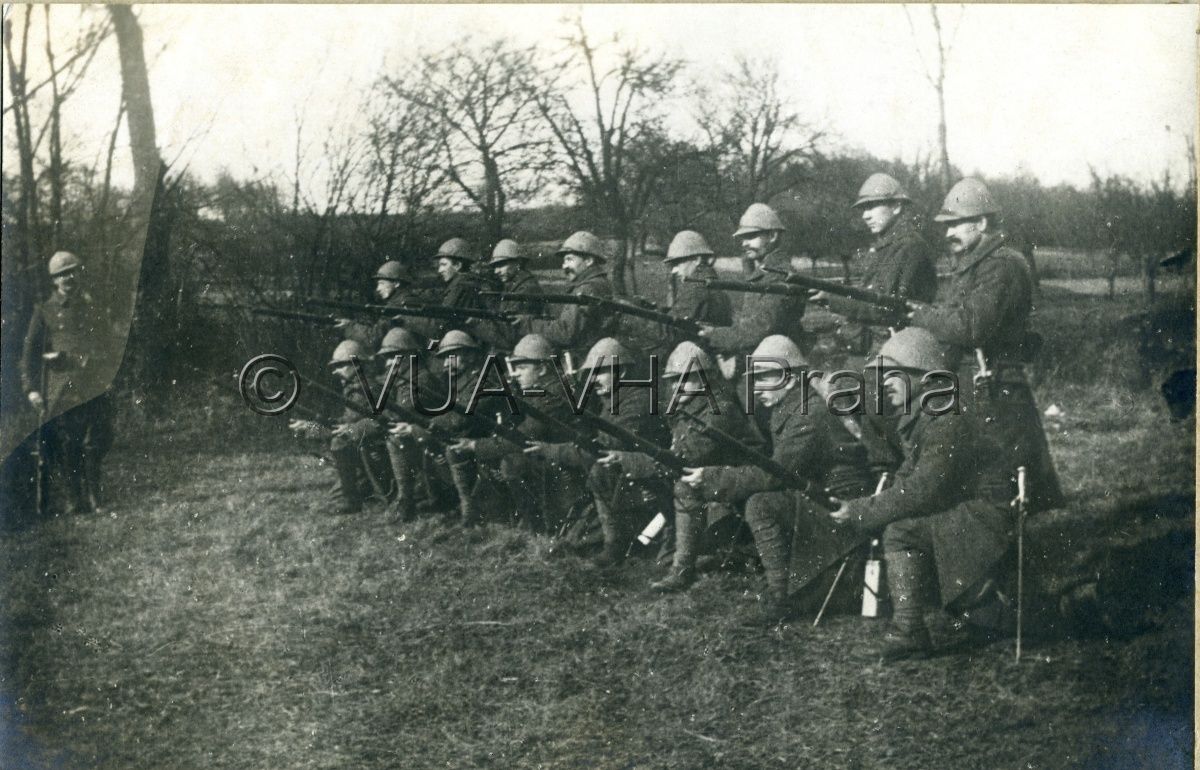
Volunteers of the Nazdar Company (in French 1ère compagnie, bataillon C du 2e Régiment de Marche du 1er Étranger, i.e. the 1st company of the C battalion, the 2nd marching regiment of the 1st Legion division), the first Czechoslovak military unit in France where Czech volunteers were involved, after a victorious battle of Arras in May 1915. Military Historical Archive Prague
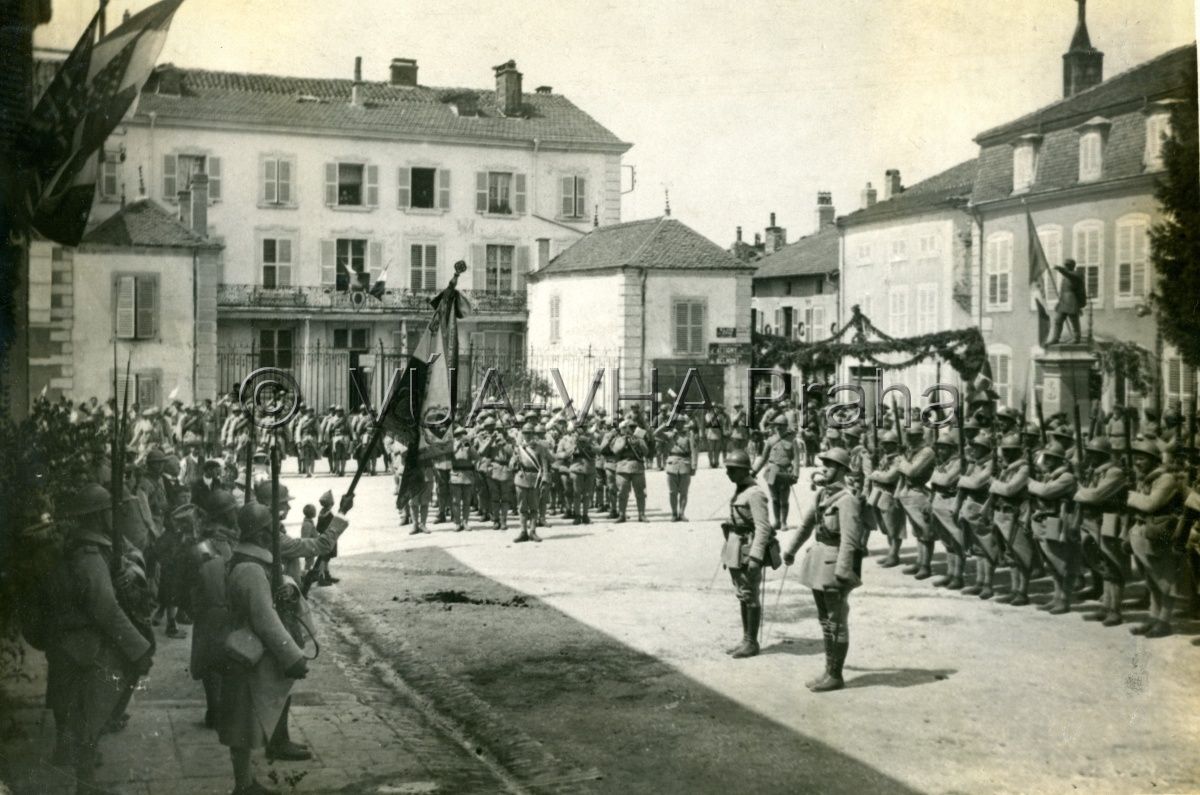
Former soldiers of the Austro-Hungarian Imperial and Royal Army, subsequently prisoners and then members of the 2nd battalion of the 21st regiment of the Czechoslovak Voluntary Revolutionary Army (Legions) in Darney, France when leaving for the front. Military Historical Archive Prague

Group of a machine gun company of the 23rd Rifle Regiment of the Czechoslovak Voluntary Revolutionary Army (Legions) in Cognac, France in autumn 1918. Military Historical Archive Prague
References
Prokš, P.: Habsburkové a Velká válka (1914–1918). Praha 2011;
Semotanová, E. ‒ Cajthaml, J. a kol.: Akademický atlas českých dějin. Praha 2014, 2. akt. vydání 2016;
Kárník, Z.: České země v éře první republiky. Vznik, budování a zlatá léta republiky (1918 - 1929) . Praha 2017.;
Bergman, P.: Lager Broumov/Braunau 1915–1918. Broumov 2018;
Zabloudilová, J.: V ruském zajetí. Organizace zajatých Čechů a Slováků v Rusku (1914–1918). Praha 2018;
Semotanová, E. Zudová-Lešková, Z. ‒ Močičková, J. Cajthaml, J. ‒ Seemann, P. ‒ Bláha J. D. a kol.: Český historický atlas. Kapitoly z dějin 20. století. Praha 2019.

This work is licensed under a Creative Commons BY-NC-ND 4.0
POW camps with a focus on the Czechs and Slovaks in Italy
The first worldwide war, which broke out on 28 July 1914 when Austria-Hungary declared war on Serbia, started a reaction of joining actors that resulted in hundreds of thousands of prisoners of war after the first battles. Soldiers of the Austro-Hungarian Imperial and Royal Army – the Czechs and Slovaks – filled the prisoner of war (POW) camps mainly in Russia, Serbia, France, and Italy. By virtue of compatriots and political activities of Tomáš Garrigue Masaryk and Milan Rastislav Štefánik, the Czech and Slovak prisoners formed Czechoslovak voluntary foreign forces, which became involved in the war. Several types of POW camps (Kriegsgefangenenlager) were also established for the enemy Entente soldiers on the Czech and Slovak territories.
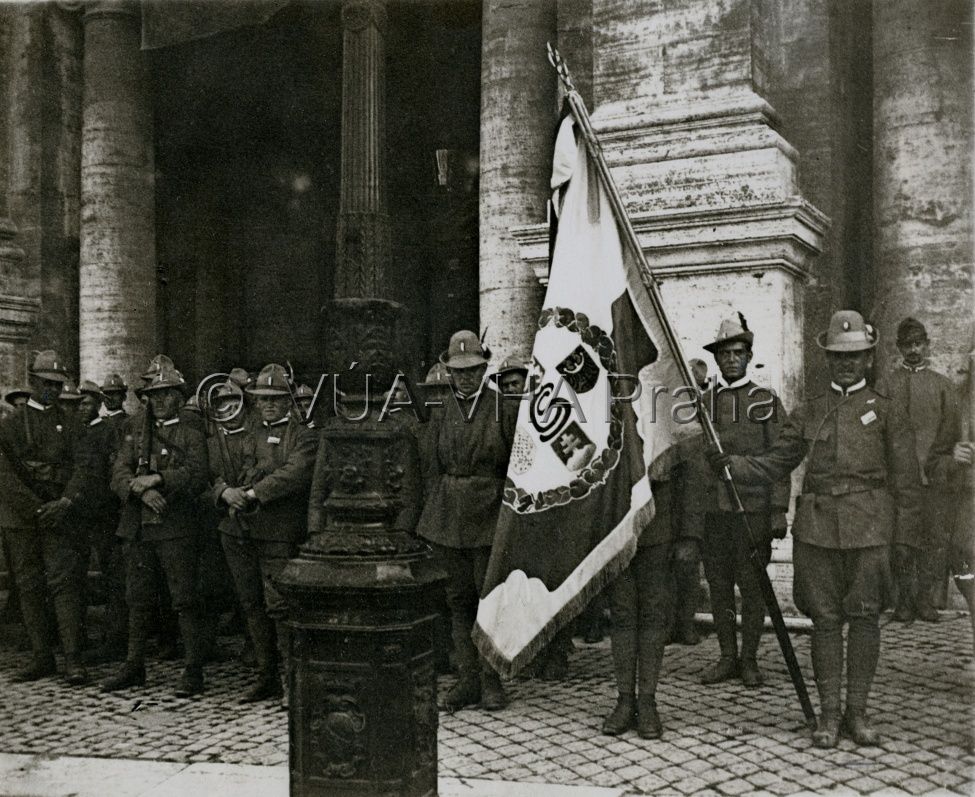
Guard of honour of the 1st company of the 34th Rifle Regiment of the Czechoslovak Voluntary Revolutionary Army in Italy (Legions) when receiving a standard on 28 May 1918. Military Historical Archive Prague
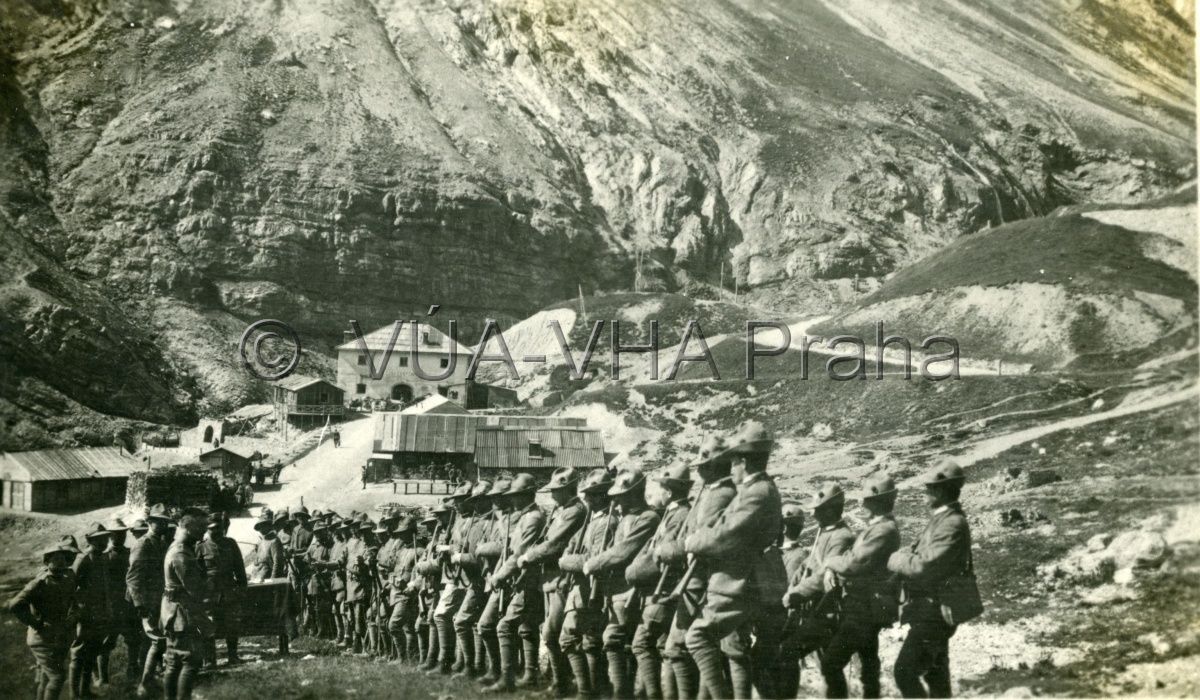
Oath of the 39th Rifle Regiment of the 'Intelligence' Czechoslovak Voluntary Revolutionary Army in Stelvio Pass (2800 m), South Tyrol, Italy. Capt. Jan Šeba, delegate of the Czechoslovak National Council (later an important Czechoslovak diplomat) leading the oath of the 1st company members. Military Historical Archive Prague
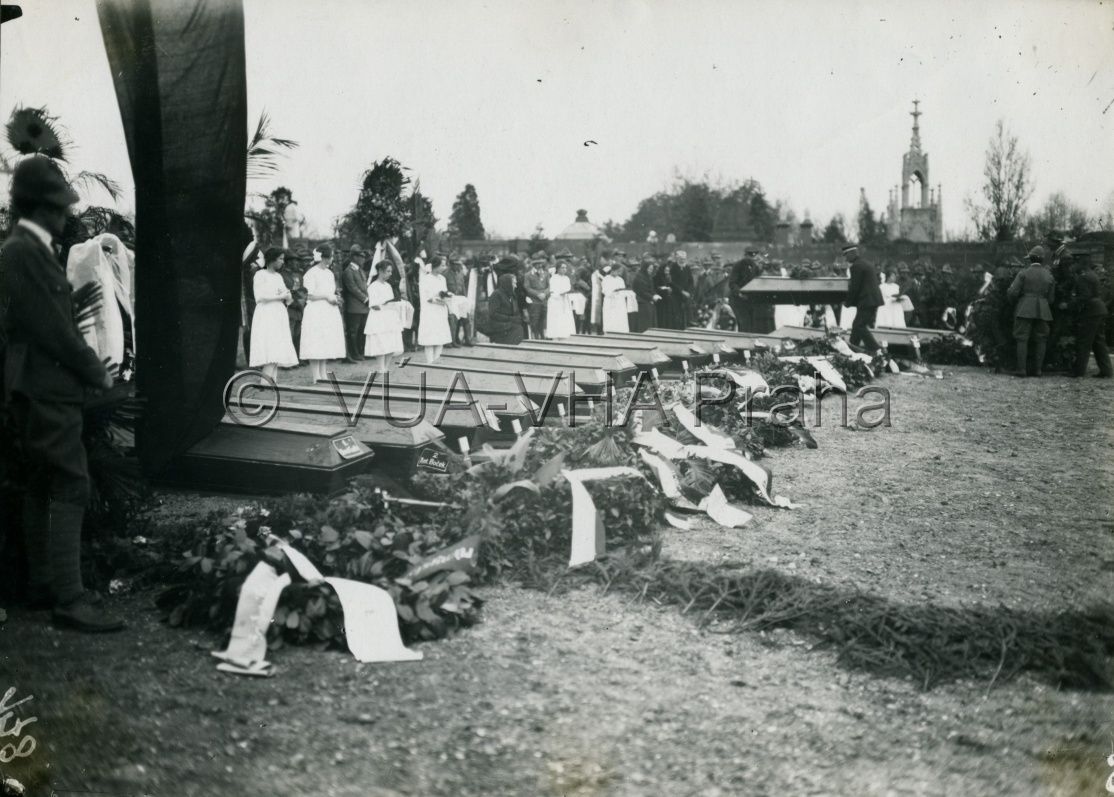
Not everyone returned to his homeland. Forty-two soldiers from the Czechoslovak Voluntary Revolutionary Army in Italy who fought for the establishment of independent Czechoslovakia were captured by the Imperial and Royal Army in September 1918 in the fights for Dos Alto and executed. When their mortal remains were brought from Italy, they were buried in Olšany Cemetery in Prague on 24 April 1921. Military Historical Archive Prague
References
Prokš, P.: Habsburkové a Velká válka (1914–1918). Praha 2011;
Semotanová, E. ‒ Cajthaml, J. a kol.: Akademický atlas českých dějin. Praha 2014, 2. akt. vydání 2016;
Kárník, Z.: České země v éře první republiky. Vznik, budování a zlatá léta republiky (1918 - 1929) . Praha 2017.;
Bergman, P.: Lager Broumov/Braunau 1915–1918. Broumov 2018;
Zabloudilová, J.: V ruském zajetí. Organizace zajatých Čechů a Slováků v Rusku (1914–1918). Praha 2018;
Semotanová, E. Zudová-Lešková, Z. ‒ Močičková, J. Cajthaml, J. ‒ Seemann, P. ‒ Bláha J. D. a kol.: Český historický atlas. Kapitoly z dějin 20. století. Praha 2019.

This work is licensed under a Creative Commons BY-NC-ND 4.0
POW camps on the Czech and Slovak (Czechoslovak) territories
The first worldwide war, which broke out on 28 July 1914 when Austria-Hungary declared war on Serbia, started a reaction of joining actors that resulted in hundreds of thousands of prisoners of war after the first battles. Soldiers of the Austro-Hungarian Imperial and Royal Army – the Czechs and Slovaks – filled the prisoner of war (POW) camps mainly in Russia, Serbia, France, and Italy. By virtue of compatriots and political activities of Tomáš Garrigue Masaryk and Milan Rastislav Štefánik, the Czech and Slovak prisoners formed Czechoslovak voluntary foreign forces, which became involved in the war. Several types of POW camps (Kriegsgefangenenlager) were also established for the enemy Entente soldiers on the Czech and Slovak territories.
References
Prokš, P.: Habsburkové a Velká válka (1914–1918). Praha 2011;
Semotanová, E. ‒ Cajthaml, J. a kol.: Akademický atlas českých dějin. Praha 2014, 2. akt. vydání 2016;
Kárník, Z.: České země v éře první republiky. Vznik, budování a zlatá léta republiky (1918 - 1929) . Praha 2017.;
Bergman, P.: Lager Broumov/Braunau 1915–1918. Broumov 2018;
Zabloudilová, J.: V ruském zajetí. Organizace zajatých Čechů a Slováků v Rusku (1914–1918). Praha 2018;
Semotanová, E. Zudová-Lešková, Z. ‒ Močičková, J. Cajthaml, J. ‒ Seemann, P. ‒ Bláha J. D. a kol.: Český historický atlas. Kapitoly z dějin 20. století. Praha 2019.

This work is licensed under a Creative Commons BY-NC-ND 4.0

